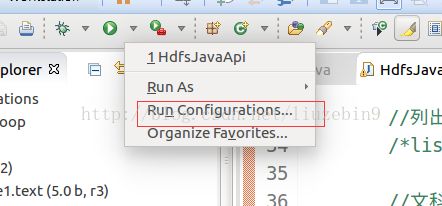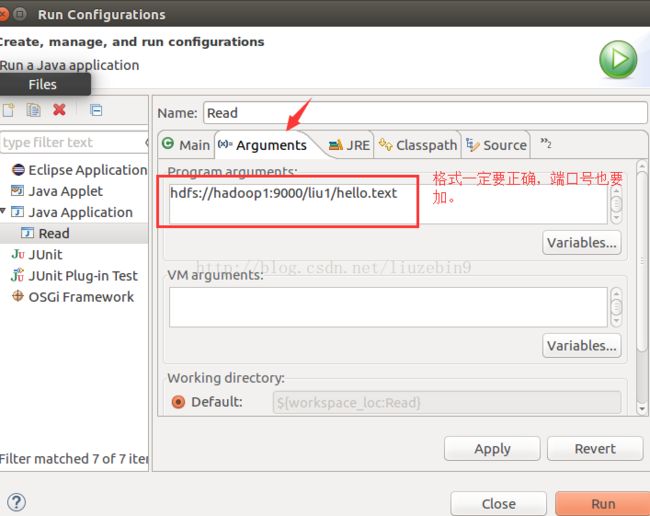- 尚硅谷电商数仓6.0,hive on spark,spark启动不了
新时代赚钱战士
hivesparkhadoop
在datagrip执行分区插入语句时报错[42000][40000]Errorwhilecompilingstatement:FAILED:SemanticExceptionFailedtogetasparksession:org.apache.hadoop.hive.ql.metadata.HiveException:FailedtocreateSparkclientforSparksessio
- Hadoop相关面试题
努力的搬砖人.
java面试hadoop
以下是150道Hadoop面试题及其详细回答,涵盖了Hadoop的基础知识、HDFS、MapReduce、YARN、HBase、Hive、Sqoop、Flume、ZooKeeper等多个方面,每道题目都尽量详细且简单易懂:Hadoop基础概念类1.什么是Hadoop?Hadoop是一个由Apache基金会开发的开源分布式计算框架,主要用于处理和存储大规模数据集。它提供了高容错性和高扩展性的分布式存
- Flink读取kafka数据并写入HDFS
王知无(import_bigdata)
Flink系统性学习专栏hdfskafkaflink
硬刚大数据系列文章链接:2021年从零到大数据专家的学习指南(全面升级版)2021年从零到大数据专家面试篇之Hadoop/HDFS/Yarn篇2021年从零到大数据专家面试篇之SparkSQL篇2021年从零到大数据专家面试篇之消息队列篇2021年从零到大数据专家面试篇之Spark篇2021年从零到大数据专家面试篇之Hbase篇
- Apache storm
赵世炎
stormhadoop
Apachestorm是一个分布式的实时大数据处理系统。用于在容错和水平可拓展方法中处理大量数据。它是一个流数据框架,具有很高的摄取率,无状态。通过zk管理分布式环境和集群状态,并行地对实时数据执行各种操作。storm易于设置和操作,并且它保证每个消息将通过拓扑至少处理一次。基本上Hadoop和Storm框架用于分析大数据。两者互补,在某些方面有所不同。ApacheStorm执行除持久性之外的所有
- 什么是Apache Avro?
maozexijr
apache
什么是ApacheAvro?ApacheAvro是一个开源的数据序列化框架,主要用于高效的数据交换和存储。它由ApacheHadoop项目开发,广泛应用于大数据生态系统中(如Hadoop、Kafka等)。Avro提供了一种紧凑、快速的二进制数据格式,同时支持丰富的数据结构和模式演化。核心特性跨语言支持Avro支持多种编程语言(如Java、Python、C++、Go等),使得不同语言之间的数据交换变
- 计算机毕业设计之基于Hadoop的热点新闻分析系统的设计与实现
微信bishe69
课程设计pythondjangomysql
近些年来,随着科技的飞速发展,互联网的普及逐渐延伸到各行各业中,给人们生活带来了十分的便利,热点新闻分析系统利用计算机网络实现信息化管理,使整个热点新闻分析的发展和服务水平有显著提升。本文拟采用PyCharm开发工具,django框架、Python语言、Hadoop大数据处理技术进行开发,后台使用MySQL数据库进行信息管理,设计开发的热点新闻分析系统。通过调研和分析,系统拥有管理员和用户两个模块
- Hadoop 实战笔记(二)-- HDFS 常用 shell 命令总结
dazhong2012
Hadoophdfshadoop
一、HDFS命令显示当前目录结构#显示当前目录结构hadoopfs-ls#递归显示当前目录结构hadoopfs-ls-R#显示根目录下内容hadoopfs-ls/创建目录#创建目录hadoopfs-mkdir#递归创建目录hadoopfs-mkdir-p删除操作#删除文件hadoopfs-rm#递归删除目录和文件hadoopfs-rm-R从本地加载文件到HDFS#二选一执行即可hadoopfs-p
- How Spark Read Sftp Files from Hadoop SFTP FileSystem
IT•轩辕
CloudyComputationsparkhadoop大数据
GradleDependenciesimplementation('org.apache.spark:spark-sql_2.13:3.5.3'){excludegroup:"org.apache.logging.log4j",module:"log4j-slf4j2-impl"}implementation('org.apache.hadoop:hadoop-common:3.3.4'){exc
- 中电金信25/3/18面前笔试(需求分析岗+数据开发岗)
苍曦
需求分析前端javascript
部分相同题目在第二次数据开发岗中不做解析,本次解析来源于豆包AI,正确与否有待商榷,本文只提供一个速查与知识点的补充。一、需求分析第1题,单选题,Hadoop的核心组件包括HDFS和以下哪个?MapReduceSparkStormFlink解析:Hadoop的核心组件是HDFS(分布式文件系统)和MapReduce(分布式计算框架)。Spark、Storm、Flink虽然也是大数据处理相关技术,但
- Spark集群启动与关闭
陈沐
sparksparkhadoopbigdata
Hadoop集群和Spark的启动与关闭Hadoop集群开启三台虚拟机均启动ZookeeperzkServer.shstartMaster1上面执行启动HDFSstart-dfs.shslave1上面执行开启YARNstart-yarn.shslave2上面执行开启YARN的资源管理器yarn-daemon.shstartresourcemanager(如果nodeManager没有启动(正常情况
- Hive函数大全:从核心内置函数到自定义UDF实战指南(附详细案例与总结)
一个天蝎座 白勺 程序猿
大数据开发从入门到实战合集hivehadoop数据仓库
目录背景一、Hive函数分类与核心函数表1.内置函数分类2.用户自定义函数(UDF)分类二、常用函数详解与实战案例1.数学函数2.字符串函数3.窗口函数4.自定义UDF实战三、总结与优化建议1.核心总结2.性能优化建议3.常问问题背景Hive作为Hadoop生态中最常用的数据仓库工具,其强大的函数库是高效处理和分析海量数据的核心能力之一。Hive函数分为内置函数和用户自
- Hadoop MapReduce 词频统计(WordCount)代码解析教程
我不是少爷.
Java基础hadoopmapreduce大数据
一、概述这是一个基于HadoopMapReduce框架实现的经典词频统计程序。程序会统计输入文本中每个单词出现的次数,并将结果输出到HDFS文件系统。二、代码结构packagecom.bigdata.wc;//Hadoop核心类库导入importorg.apache.hadoop.conf.Configuration;importorg.apache.hadoop.fs.Path;//数据类型定义
- 从“笨重大象”到“敏捷火花”:Hadoop与Spark的大数据技术进化之路
Echo_Wish
大数据大数据hadoopspark
从“笨重大象”到“敏捷火花”:Hadoop与Spark的大数据技术进化之路说起大数据技术,Hadoop和Spark可以说是这个领域的两座里程碑。Hadoop曾是大数据的开山之作,而Spark则带领我们迈入了一个高效、灵活的大数据处理新时代。那么,它们的演变过程到底有何深意?背后技术上的取舍和选择,又意味着什么?一、Hadoop:分布式存储与计算的奠基者Hadoop诞生于互联网流量爆发式增长的时代,
- hadoop集群关闭命令顺序_启动和关闭Hadoop集群命令步骤
氪老师
hadoop集群关闭命令顺序
启动和关闭Hadoop集群命令步骤总结:1.在master上启动hadoop-daemon.shstartnamenode.2.在slave上启动hadoop-daemon.shstartdatanode.3.用jps指令观察执行结果.4.用hdfsdfsadmin-report观察集群配置情况.5.通过http://npfdev1:50070界面观察集群运行情况.(如果遇到问题看https://
- 在kali linux中配置hadoop伪分布式
we19a0sen
三数据分析分布式linuxhadoop
目录一.配置静态网络二.配置主机名与IP地址映射三.配置SSH免密登录四.配置Java和Hadoop环境五.配置Hadoop伪分布式六.启动与验证一.配置静态网络原因:Hadoop集群依赖稳定的网络通信,动态IP可能导致节点失联。静态IP确保节点始终通过固定地址通信。操作步骤:#修改网络配置文件sudovim/etc/network/interfaces#添加内容(根据实际网络修改):autoet
- Spark任务读取hive表数据导入es
小小小小小小小小小小码农
hiveelasticsearchsparkjava
使用elasticsearch-hadoop将hive表数据导入es,超级简单1.引入pomorg.elasticsearchelasticsearch-hadoop9.0.0-SNAPSHOT2.创建sparkconf//spark参数设置SparkConfsparkConf=newSparkConf();//要写入的索引sparkConf.set("es.resource","");//es集
- hive-进阶版-1
数据牧马人
hivehadoop数据仓库
第6章hive内部表与外部表的区别Hive是一个基于Hadoop的数据仓库工具,用于对大规模数据集进行数据存储、查询和分析。Hive支持内部表(ManagedTable)和外部表(ExternalTable)两种表类型,它们在数据存储、管理方式和生命周期等方面存在显著区别。以下是内部表和外部表的主要区别:1.数据存储位置内部表:数据存储在Hive的默认存储目录下,通常位于HDFS(HadoopDi
- 大数据手册(Spark)--Spark安装配置
WilenWu
数据分析(DataAnalysis)大数据spark分布式
本文默认在zsh终端安装配置,若使用bash终端,环境变量的配置文件相应变化。若安装包下载缓慢,可复制链接到迅雷下载,亲测极速~准备工作Spark的安装过程较为简单,在已安装好Hadoop的前提下,经过简单配置即可使用。假设已经安装好了hadoop(伪分布式)和hive,环境变量如下JAVA_HOME=/usr/opt/jdkHADOOP_HOME=/usr/local/hadoopHIVE_HO
- 虚拟机中Hadoop集群NameNode进程缺失问题解析与解决
申朝先生
hadoop大数据分布式linux
目录问题概述问题分析解决办法总结问题概述在虚拟机中运行Hadoop集群时,通过执行jps命令检查进程时,发现NameNode进程缺失。这通常会导致Hadoop集群无法正常运行,影响数据的存储和访问。问题分析导致NameNode进程缺失的原因可能有以下几点:集群未正确停止:在关闭虚拟机或重启Hadoop集群之前,未执行stop-all.sh命令正确停止集群,导致Hadoop服务异常退出,留下残留数据
- 大数据学习(67)- Flume、Sqoop、Kafka、DataX对比
viperrrrrrr
大数据学习flumekafkasqoopdatax
大数据学习系列专栏:哲学语录:用力所能及,改变世界。如果觉得博主的文章还不错的话,请点赞+收藏⭐️+留言支持一下博主哦工具主要作用数据流向实时性数据源/目标应用场景Flume实时日志采集与传输从数据源到存储系统实时日志文件、网络流量等→HDFS、HBase、Kafka等日志收集、实时监控、实时分析Sqoop关系型数据库与Hadoop间数据同步关系型数据库→Hadoop生态系统(HDFS、Hive、
- Kubernetes集群版本升级
程序员Realeo
Java后端kubernetes容器云原生
集群升级注意事项升级集群版本建议逐步升级,比如v1.20.1–>v1.21.1–>v1.22.1–>v1.23.1–>v1.24.1,不能跨度过大,否则会报错。升级步骤查看集群版本[root@hadoop102~]#kubectlgetnodesNAMESTATUSROLESAGEVERSIONhadoop102Ready,SchedulingDisabledcontrol-plane,maste
- Kubernetes集群版本升级
后端java
集群升级注意事项升级集群版本建议逐步升级,比如v1.20.1–>v1.21.1–>v1.22.1–>v1.23.1–>v1.24.1,不能跨度过大,否则会报错。升级步骤查看集群版本[root@hadoop102~]#kubectlgetnodesNAMESTATUSROLESAGEVERSIONhadoop102Ready,SchedulingDisabledcontrol-plane,maste
- Hive高级SQL技巧及实际应用场景
小技工丨
大数据随笔sqlhive数据仓库大数据
Hive高级SQL技巧及实际应用场景引言ApacheHive是一个建立在Hadoop之上的数据仓库基础设施,它提供了一个用于查询和管理分布式存储中的大型数据集的机制。通过使用类似于SQL(称为HiveQL)的语言,Hive使得数据分析变得更加简单和高效。本文将详细探讨一些Hive高级SQL技巧,并结合实际的应用场景进行说明。HiveSQL的高级使用技巧1.窗口函数描述:窗口函数允许我们在不使用GR
- hive 数字转换字符串_Hive架构及Hive SQL的执行流程解读
weixin_39756416
hive数字转换字符串
1、Hive产生背景MapReduce编程的不便性HDFS上的文件缺少Schema(表名,名称,ID等,为数据库对象的集合)2、Hive是什么Hive的使用场景是什么?基于Hadoop做一些数据清洗啊(ETL)、报表啊、数据分析可以将结构化的数据文件映射为一张数据库表,并提供类SQL查询功能。Hive是SQL解析引擎,它将SQL语句转译成M/RJob然后在Hadoop执行。由Facebook开源,
- 在hadoop上运行python_hadoop上运行python程序
廷哥带你小路超车
数据来源:http://www.nber.org/patents/acite75_99.zip首先上传测试数据到hdfs:[root@localhost:/usr/local/hadoop/hadoop-0.19.2]#bin/hadoopfs-ls/user/root/test-inFound5items-rw-r--r--1rootsupergroup1012010-10-2414:39/us
- ranger集成starrock报错
蘑菇丁
大数据+机器学习+oracle大数据
org.apache.ranger.plugin.client.HadoopException:initConnection:UnabletoconnecttoStarRocksinstance,pleaseprovidevalidvalueoffield:{jdbc.driverClassName}..com.mysql.cj.jdbc.Driver.可能的原因JDBC驱动缺失:运行环境中没有安
- 深入大数据世界:Kontext.TECH的Hadoop之旅
钱桦实Emery
深入大数据世界:Kontext.TECH的Hadoop之旅winutils项目地址:https://gitcode.com/gh_mirrors/winut/winutils在大数据的浩瀚宇宙中,Hadoop作为一颗璀璨的星辰,一直扮演着至关重要的角色。对于渴望探索这一领域的开发者和学习者而言,Kontext.TECH提供了一扇独特而便捷的大门,让你的学习之旅更加顺畅。项目介绍Kontext.Ha
- 大数据学习(61)-Impala与Hive计算引擎
viperrrrrrr
学习impalahiveyarnhadoop
&&大数据学习&&系列专栏:哲学语录:承认自己的无知,乃是开启智慧的大门如果觉得博主的文章还不错的话,请点赞+收藏⭐️+留言支持一下博主哦一、impala与yarn资源管理YARN是ApacheHadoop生态系统中的一个资源管理器,它采用了master/slave的架构,使得多个处理框架能够在同一集群上共享资源。Impala作为Hadoop生态系统中的一个组件,可以与YARN集成,以便更好地管理
- 大数据学习(62)- Hadoop-yarn
viperrrrrrr
大数据yarn
&&大数据学习&&系列专栏:哲学语录:承认自己的无知,乃是开启智慧的大门如果觉得博主的文章还不错的话,请点赞+收藏⭐️+留言支持一下博主哦一、YARN概述1.YARN简介Hadoop-YARN是ApacheHadoop生态系统中的一个集群资源管理器。它作为Hadoop的第二代资源管理框架,负责管理和分配集群中的计算资源。YARN的设计目标是提供一个通用的资源管理框架,使得Hadoop集群可以同时运
- HBase2.6.1部署文档
CXH728
zookeeperhbase
1、HBase概述ApacheHBase是基于Hadoop分布式文件系统(HDFS)之上的分布式、列存储、NoSQL数据库。它适合处理结构化和半结构化数据,能够存储数十亿行和数百万列的数据,并支持实时读写操作。HBase通常应用于需要快速随机读写、低延迟访问以及高吞吐量的场景,例如大规模日志处理、社交网络数据存储等。HBase特性列存储模型:HBase的数据是按列族存储的,适合高稀疏数据。行键分区
- Spring的注解积累
yijiesuifeng
spring注解
用注解来向Spring容器注册Bean。
需要在applicationContext.xml中注册:
<context:component-scan base-package=”pagkage1[,pagkage2,…,pagkageN]”/>。
如:在base-package指明一个包
<context:component-sc
- 传感器
百合不是茶
android传感器
android传感器的作用主要就是来获取数据,根据得到的数据来触发某种事件
下面就以重力传感器为例;
1,在onCreate中获得传感器服务
private SensorManager sm;// 获得系统的服务
private Sensor sensor;// 创建传感器实例
@Override
protected void
- [光磁与探测]金吕玉衣的意义
comsci
这是一个古代人的秘密:现在告诉大家
信不信由你们:
穿上金律玉衣的人,如果处于灵魂出窍的状态,可以飞到宇宙中去看星星
这就是为什么古代
- 精简的反序打印某个数
沐刃青蛟
打印
以前看到一些让求反序打印某个数的程序。
比如:输入123,输出321。
记得以前是告诉你是几位数的,当时就抓耳挠腮,完全没有思路。
似乎最后是用到%和/方法解决的。
而今突然想到一个简短的方法,就可以实现任意位数的反序打印(但是如果是首位数或者尾位数为0时就没有打印出来了)
代码如下:
long num, num1=0;
- PHP:6种方法获取文件的扩展名
IT独行者
PHP扩展名
PHP:6种方法获取文件的扩展名
1、字符串查找和截取的方法
1
$extension
=
substr
(
strrchr
(
$file
,
'.'
), 1);
2、字符串查找和截取的方法二
1
$extension
=
substr
- 面试111
文强chu
面试
1事务隔离级别有那些 ,事务特性是什么(问到一次)
2 spring aop 如何管理事务的,如何实现的。动态代理如何实现,jdk怎么实现动态代理的,ioc是怎么实现的,spring是单例还是多例,有那些初始化bean的方式,各有什么区别(经常问)
3 struts默认提供了那些拦截器 (一次)
4 过滤器和拦截器的区别 (频率也挺高)
5 final,finally final
- XML的四种解析方式
小桔子
domjdomdom4jsax
在平时工作中,难免会遇到把 XML 作为数据存储格式。面对目前种类繁多的解决方案,哪个最适合我们呢?在这篇文章中,我对这四种主流方案做一个不完全评测,仅仅针对遍历 XML 这块来测试,因为遍历 XML 是工作中使用最多的(至少我认为)。 预 备 测试环境: AMD 毒龙1.4G OC 1.5G、256M DDR333、Windows2000 Server
- wordpress中常见的操作
aichenglong
中文注册wordpress移除菜单
1 wordpress中使用中文名注册解决办法
1)使用插件
2)修改wp源代码
进入到wp-include/formatting.php文件中找到
function sanitize_user( $username, $strict = false
- 小飞飞学管理-1
alafqq
管理
项目管理的下午题,其实就在提出问题(挑刺),分析问题,解决问题。
今天我随意看下10年上半年的第一题。主要就是项目经理的提拨和培养。
结合我自己经历写下心得
对于公司选拔和培养项目经理的制度有什么毛病呢?
1,公司考察,选拔项目经理,只关注技术能力,而很少或没有关注管理方面的经验,能力。
2,公司对项目经理缺乏必要的项目管理知识和技能方面的培训。
3,公司对项目经理的工作缺乏进行指
- IO输入输出部分探讨
百合不是茶
IO
//文件处理 在处理文件输入输出时要引入java.IO这个包;
/*
1,运用File类对文件目录和属性进行操作
2,理解流,理解输入输出流的概念
3,使用字节/符流对文件进行读/写操作
4,了解标准的I/O
5,了解对象序列化
*/
//1,运用File类对文件目录和属性进行操作
//在工程中线创建一个text.txt
- getElementById的用法
bijian1013
element
getElementById是通过Id来设置/返回HTML标签的属性及调用其事件与方法。用这个方法基本上可以控制页面所有标签,条件很简单,就是给每个标签分配一个ID号。
返回具有指定ID属性值的第一个对象的一个引用。
语法:
&n
- 励志经典语录
bijian1013
励志人生
经典语录1:
哈佛有一个著名的理论:人的差别在于业余时间,而一个人的命运决定于晚上8点到10点之间。每晚抽出2个小时的时间用来阅读、进修、思考或参加有意的演讲、讨论,你会发现,你的人生正在发生改变,坚持数年之后,成功会向你招手。不要每天抱着QQ/MSN/游戏/电影/肥皂剧……奋斗到12点都舍不得休息,看就看一些励志的影视或者文章,不要当作消遣;学会思考人生,学会感悟人生
- [MongoDB学习笔记三]MongoDB分片
bit1129
mongodb
MongoDB的副本集(Replica Set)一方面解决了数据的备份和数据的可靠性问题,另一方面也提升了数据的读写性能。MongoDB分片(Sharding)则解决了数据的扩容问题,MongoDB作为云计算时代的分布式数据库,大容量数据存储,高效并发的数据存取,自动容错等是MongoDB的关键指标。
本篇介绍MongoDB的切片(Sharding)
1.何时需要分片
&nbs
- 【Spark八十三】BlockManager在Spark中的使用场景
bit1129
manager
1. Broadcast变量的存储,在HttpBroadcast类中可以知道
2. RDD通过CacheManager存储RDD中的数据,CacheManager也是通过BlockManager进行存储的
3. ShuffleMapTask得到的结果数据,是通过FileShuffleBlockManager进行管理的,而FileShuffleBlockManager最终也是使用BlockMan
- yum方式部署zabbix
ronin47
yum方式部署zabbix
安装网络yum库#rpm -ivh http://repo.zabbix.com/zabbix/2.4/rhel/6/x86_64/zabbix-release-2.4-1.el6.noarch.rpm 通过yum装mysql和zabbix调用的插件还有agent代理#yum install zabbix-server-mysql zabbix-web-mysql mysql-
- Hibernate4和MySQL5.5自动创建表失败问题解决方法
byalias
J2EEHibernate4
今天初学Hibernate4,了解了使用Hibernate的过程。大体分为4个步骤:
①创建hibernate.cfg.xml文件
②创建持久化对象
③创建*.hbm.xml映射文件
④编写hibernate相应代码
在第四步中,进行了单元测试,测试预期结果是hibernate自动帮助在数据库中创建数据表,结果JUnit单元测试没有问题,在控制台打印了创建数据表的SQL语句,但在数据库中
- Netty源码学习-FrameDecoder
bylijinnan
javanetty
Netty 3.x的user guide里FrameDecoder的例子,有几个疑问:
1.文档说:FrameDecoder calls decode method with an internally maintained cumulative buffer whenever new data is received.
为什么每次有新数据到达时,都会调用decode方法?
2.Dec
- SQL行列转换方法
chicony
行列转换
create table tb(终端名称 varchar(10) , CEI分值 varchar(10) , 终端数量 int)
insert into tb values('三星' , '0-5' , 74)
insert into tb values('三星' , '10-15' , 83)
insert into tb values('苹果' , '0-5' , 93)
- 中文编码测试
ctrain
编码
循环打印转换编码
String[] codes = {
"iso-8859-1",
"utf-8",
"gbk",
"unicode"
};
for (int i = 0; i < codes.length; i++) {
for (int j
- hive 客户端查询报堆内存溢出解决方法
daizj
hive堆内存溢出
hive> select * from t_test where ds=20150323 limit 2;
OK
Exception in thread "main" java.lang.OutOfMemoryError: Java heap space
问题原因: hive堆内存默认为256M
这个问题的解决方法为:
修改/us
- 人有多大懒,才有多大闲 (评论『卓有成效的程序员』)
dcj3sjt126com
程序员
卓有成效的程序员给我的震撼很大,程序员作为特殊的群体,有的人可以这么懒, 懒到事情都交给机器去做 ,而有的人又可以那么勤奋,每天都孜孜不倦得做着重复单调的工作。
在看这本书之前,我属于勤奋的人,而看完这本书以后,我要努力变成懒惰的人。
不要在去庞大的开始菜单里面一项一项搜索自己的应用程序,也不要在自己的桌面上放置眼花缭乱的快捷图标
- Eclipse简单有用的配置
dcj3sjt126com
eclipse
1、显示行号 Window -- Prefences -- General -- Editors -- Text Editors -- show line numbers
2、代码提示字符 Window ->Perferences,并依次展开 Java -> Editor -> Content Assist,最下面一栏 auto-Activation
- 在tomcat上面安装solr4.8.0全过程
eksliang
Solrsolr4.0后的版本安装solr4.8.0安装
转载请出自出处:
http://eksliang.iteye.com/blog/2096478
首先solr是一个基于java的web的应用,所以安装solr之前必须先安装JDK和tomcat,我这里就先省略安装tomcat和jdk了
第一步:当然是下载去官网上下载最新的solr版本,下载地址
- Android APP通用型拒绝服务、漏洞分析报告
gg163
漏洞androidAPP分析
点评:记得曾经有段时间很多SRC平台被刷了大量APP本地拒绝服务漏洞,移动安全团队爱内测(ineice.com)发现了一个安卓客户端的通用型拒绝服务漏洞,来看看他们的详细分析吧。
0xr0ot和Xbalien交流所有可能导致应用拒绝服务的异常类型时,发现了一处通用的本地拒绝服务漏洞。该通用型本地拒绝服务可以造成大面积的app拒绝服务。
针对序列化对象而出现的拒绝服务主要
- HoverTree项目已经实现分层
hvt
编程.netWebC#ASP.ENT
HoverTree项目已经初步实现分层,源代码已经上传到 http://hovertree.codeplex.com请到SOURCE CODE查看。在本地用SQL Server 2008 数据库测试成功。数据库和表请参考:http://keleyi.com/a/bjae/ue6stb42.htmHoverTree是一个ASP.NET 开源项目,希望对你学习ASP.NET或者C#语言有帮助,如果你对
- Google Maps API v3: Remove Markers 移除标记
天梯梦
google maps api
Simply do the following:
I. Declare a global variable:
var markersArray = [];
II. Define a function:
function clearOverlays() {
for (var i = 0; i < markersArray.length; i++ )
- jQuery选择器总结
lq38366
jquery选择器
1 2 3 4 5 6 7 8 9 10 11 12 13 14 15 16 17 18 19 20 21 22 23 24 25 26 27 28 29 30 31 32 33 34 35 36 37 38 39 40
- 基础数据结构和算法六:Quick sort
sunwinner
AlgorithmQuicksort
Quick sort is probably used more widely than any other. It is popular because it is not difficult to implement, works well for a variety of different kinds of input data, and is substantially faster t
- 如何让Flash不遮挡HTML div元素的技巧_HTML/Xhtml_网页制作
刘星宇
htmlWeb
今天在写一个flash广告代码的时候,因为flash自带的链接,容易被当成弹出广告,所以做了一个div层放到flash上面,这样链接都是a触发的不会被拦截,但发现flash一直处于div层上面,原来flash需要加个参数才可以。
让flash置于DIV层之下的方法,让flash不挡住飘浮层或下拉菜单,让Flash不档住浮动对象或层的关键参数:wmode=opaque。
方法如下:
- Mybatis实用Mapper SQL汇总示例
wdmcygah
sqlmysqlmybatis实用
Mybatis作为一个非常好用的持久层框架,相关资料真的是少得可怜,所幸的是官方文档还算详细。本博文主要列举一些个人感觉比较常用的场景及相应的Mapper SQL写法,希望能够对大家有所帮助。
不少持久层框架对动态SQL的支持不足,在SQL需要动态拼接时非常苦恼,而Mybatis很好地解决了这个问题,算是框架的一大亮点。对于常见的场景,例如:批量插入/更新/删除,模糊查询,多条件查询,联表查询,

